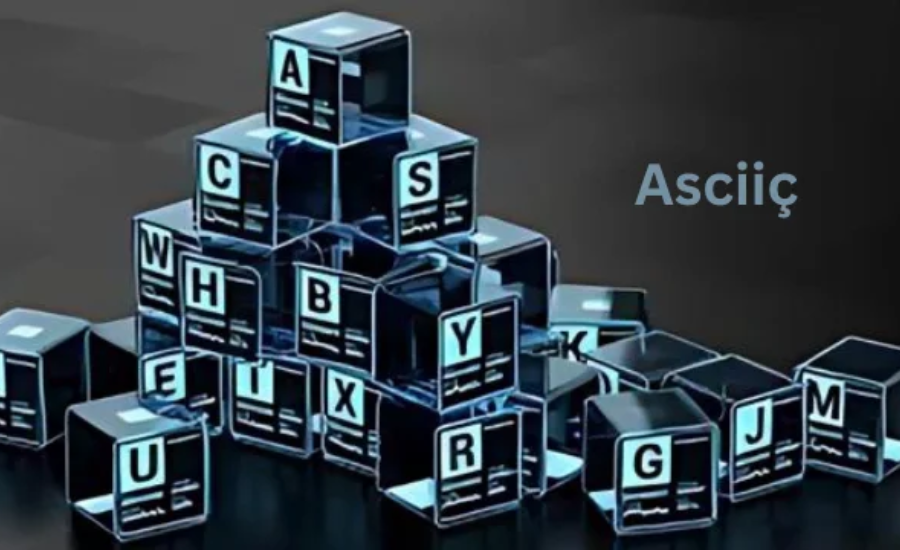ASCII Explained: Understanding Character Encoding Through Time
Character encoding is essential for digital communications, as it enables computers to accurately interpret and process text. One of the most pivotal encoding schemes in this domain is ASCII or the American Standard Code for Information Interchange. Developed in the early 1960s, ASCII has played a crucial role in shaping modern computing by providing a standardized method for text representation.
In this article, we’ll delve into the history of ASCII, examining its origins, structural design, and various applications. We’ll also discuss how ASCII continues to influence contemporary digital systems and its enduring relevance in today’s technology landscape. From its initial adoption to its role in current encoding practices, understanding ASCII offers valuable insights into the evolution of digital text communication.
The Origins Of ASCII

Developed in the early 1960s, ASCII (American Standard Code for Information Interchange) marked a groundbreaking advancement in the standardization of text representation for computers. Before ASCII’s creation, the absence of a unified encoding system led to significant compatibility issues between different computing systems and devices. This lack of standardization often resulted in misinterpretations of text and hindered effective communication between diverse technologies.
The ASCII standard was pioneered by Robert W. Bemer and his team at Bell Labs. Their goal was to establish a consistent and dependable method for encoding text, which would be universally applicable across various platforms.
ASCII’s introduction not only resolved many of the compatibility challenges faced by early computer systems but also laid the foundation for future advancements in text encoding. Its impact has been profound, ensuring that text representation remains standardized and reliable across the digital world.
Composition Of ASCII
ASCII is a 7-bit character encoding scheme, designed to represent text in computers and other devices that use text. The 7-bit structure allows for the encoding of 128 unique characters, each represented by a specific numerical code.
The ASCII Standard Is divided Into Several Distinct Categories
- Control Characters (0-31): These are non-printable characters used primarily for text formatting and control functions. They include commands such as line feeds (which move the cursor to the next line) and carriage returns (which move the cursor to the beginning of the line).
- Printable Characters (32-126): This range encompasses all the characters that can be displayed on a screen or printed on paper. It includes:
- Digits (0-9): The ten numeric characters used in numerical data and calculations.
- Uppercase Letters (A-Z): The 26 letters of the English alphabet in their capital form.
- Lowercase Letters (a-z): The 26 letters of the English alphabet in their small form.
- Punctuation Marks and Symbols: Various characters such as periods, commas, exclamation points, question marks, and other symbols used to structure and articulate written language.
- Delete Character (127): This is a special character known as the “delete” character, used historically to signal the removal or correction of a character in text. It was originally used in early computing systems to overwrite or delete incorrect characters.
Usages Of ASCII
ASCII has been instrumental in shaping the development of computer systems and software, serving a variety of crucial functions in the digital landscape. Its simplicity and wide acceptance have made it a fundamental component in several key areas:
- Source Code Representation: ASCII encoding is commonly used to represent programming languages, ensuring that source code can be written, shared, and compiled seamlessly across different computing environments. This consistency is vital for developers, as it allows code to be portable and executable on various platforms without issues related to character encoding.
- Data Interchange: ASCII plays a significant role in data interchange protocols, including email and network communications. Its straightforward structure and broad compatibility make it an ideal choice for transmitting text-based information across diverse systems.
- Text Files: Many plain text files, such as configuration files and log files, utilize ASCII encoding to store information in a human-readable format. This includes a wide range of documents, from simple text files to more complex configuration settings that control software behavior. ASCII’s role in these files ensures that the content remains accessible and easily interpretable, aiding in troubleshooting and system management.
Overall, ASCII’s impact extends beyond these specific uses, underpinning much of the foundational text handling in computing. Its role in standardizing text representation has been crucial in enabling interoperability and ensuring that data remains consistent across different systems and applications.
ASCII’s Continued Relevance
Despite the advent of more sophisticated encoding schemes like Unicode, ASCII continues to hold significant relevance in the digital world.
- Compatibility: ASCII is embedded within the broader Unicode standard, with the first 128 characters of Unicode being directly equivalent to ASCII. This inherent compatibility ensures that text encoded using ASCII remains fully functional and interoperable with modern systems and applications that use Unicode.
- Simplicity: The straightforward design of ASCII makes it particularly valuable in scenarios where a basic text representation suffices. Its simplicity is advantageous in specific programming contexts and lightweight data formats where advanced encoding features are unnecessary. This simplicity contributes to faster processing and lower overhead, making ASCII a practical choice for applications that prioritize efficiency and ease of use.
Overall, while Unicode has expanded the range of characters and symbols available for digital communication, ASCII’s fundamental role in ensuring compatibility and providing a basic text representation continues to make it relevant in various computing scenarios. Its integration within Unicode and its uncomplicated design ensure that ASCII remains a valuable tool in the evolving landscape of text encoding.
ASCII In Modern Computing
Although Unicode has become the dominant standard for character encoding due to its extensive range of supported characters, including diverse languages, symbols, and scripts, ASCII (American Standard Code for Information Interchange) remains a fundamental element of computing. ASCII’s simplicity and reliability in representing English characters and control codes have made it an enduring choice in many systems and applications.
Developed in the 1960s, ASCII encodes text using a 7-bit scheme, allowing for 128 unique symbols. This straightforward approach includes standard English letters, digits, punctuation marks, and a set of control codes essential for text formatting and communication. Despite its limitations, such as the inability to represent characters from non-English languages or specialized symbols, ASCII’s design principles have profoundly influenced the development of modern encoding systems.
In practice, ASCII’s influence is evident in the structure of many contemporary encoding schemes, including extended versions like ISO-8859 and UTF-8. This compatibility has facilitated a smooth transition from ASCII to more comprehensive encodings while preserving the reliability and simplicity that ASCII introduced.
FAQs
Q: What is ASCII?
ASCII, or American Standard Code for Information Interchange, is a character encoding system that uses 7 bits to represent 128 distinct characters. This includes letters, digits, punctuation marks, and control characters used for text processing.
Q: How does ASCII function?
ASCII employs a 7-bit encoding scheme, providing 128 unique codes for characters. The ASCII table consists of control characters (used for text formatting), printable characters (letters, digits, punctuation), and the delete character.
Q: Is ASCII still relevant today?
Yes, ASCII remains important. It is a subset of Unicode, with the first 128 characters of Unicode matching those of ASCII, ensuring ongoing compatibility. ASCII’s straightforward nature continues to be useful in contexts where basic text encoding is sufficient.
Q: How does ASCII compare to Unicode?
Unicode is a more extensive encoding system, accommodating a wide array of characters from multiple languages and symbol sets, far exceeding ASCII’s 128-character limit. While Unicode has largely replaced ASCII in many contexts, ASCII’s simplicity and compatibility make it still relevant.
Q: Can ASCII handle multilingual text?
For text that includes characters from various languages, Unicode is the preferred encoding system due to its extensive character set.
Conclusion
ASCII has been a cornerstone in the development of digital communications, providing a standardized approach to text encoding that was crucial in the early stages of computer technology. Introduced in the 1960s, ASCII established a common framework for representing characters, which was essential for the interoperability of early computing systems and paved the way for more advanced technologies.
Although modern encoding systems like Unicode have largely superseded ASCII due to their ability to accommodate a vast range of characters from various languages and symbol sets, ASCII’s influence remains significant. Its straightforward, 7-bit encoding scheme allowed for the efficient representation of essential characters and control codes, which were instrumental in the development of programming languages, data communication protocols, and text file formats.
The simplicity of ASCII—encoding only 128 characters—ensured that it was easy to implement and widely compatible with early computer systems. This compatibility has carried through to contemporary systems, where ASCII’s basic character set remains part of Unicode, ensuring seamless integration with modern technologies.
As technology progresses, the foundational ideas established by ASCII continue to be relevant. They offer valuable insights into the evolution of digital text encoding and the development of modern character encoding standards. Despite the advent of more sophisticated systems, ASCII’s legacy endures, reflecting its enduring importance in the history of digital communication and text representation.
Subscribe for the latest news and alerts. Hip Hop Hip Hop!






